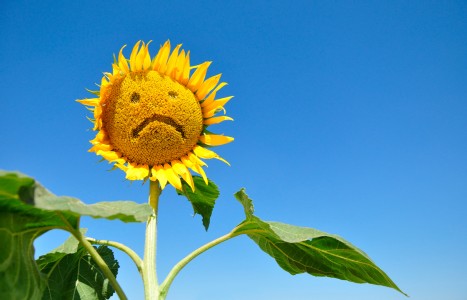Did any of you ever get the feeling in school that it simply was not OK to speak about wanting to be successful? To get into the nitty gritty details of how to make money in practice? Maybe you were even someone like me who was directly told by someone in a position of power that I needed to take what I could get because in private practice, I wouldn’t make money.
The Capacity to Rectify the Qi: The Spleen's Primary Channel
The acupuncture channels are tools for healing. They are also guidebooks - manuals detailing human development and disease - designed to communicate the path of growth, healing and transformation. There are six channel systems. Each system is like a "book," discussing an aspect of the human condition. Specific channels within the system detail greater specifics, acting like chapters within the book.
Importance of the channel systems has been debated throughout history. Some have called the Divergent Channels the most important channel system to learn, saying they should be studied and understood first. Others consider the Primary Channels most important, as suggested by their name: "primary."
During the Jin Yuan Period (1115-1368 CE) in Chinese History, many different schools of thought emerged. This was a time of great debate, where a number of scholars attempted to innovate by criticizing the medical classics. Each school believed one organ to be the root of all disease, and therefore also the root of all healing. For example, Li Dong Yuan's School of Post Natal Tonification believed all disease was rooted in the Earth element. By treating the Stomach and Spleen, one could treat all conditions. Zhang Zi-He's School of Attacking and Purging saw treatment of the body's external terrain as most important in the prevention and treatment of disease. His school emphasized the Liver and Lungs as the most important organs to treat. This tradition believes working with organs that govern the body's exterior layer will protect from external invasion, as well as allow internalized pathogens the capacity to be released via detox.
By the Jin Yuan period, most scholars presented their ideas through the language of herbal medicine. The popularity of acupuncture had diminished amongst scholars. By the Song Dynasty (960-1279 CE), the Primary Channels and Extraordinary Vessels were the only channel systems still being discussed. Acupuncture as a healing modality had been downgraded to being medicine applicable only for acute conditions. Herbal medicine had become the dominating modality within the scholarly sect.
In the United States, acupuncture has gained tremendous popularity. It is penetrating into mainstream consciousness and use, arguably more than Chinese herbal medicinal. Acupuncture is still seen as a modality best used for acute conditions. However there's a growing number of scholars interested in the study of acupuncture's classical past: when it was considered a complete system of medicine.
The only acupuncture-focused classical texts still in existence are those from the Han Dynasty: the Nei Jing Ling Shu and Jia Yu Jing. These are texts an acupuncture classicist must study for true appreciation of the medicine. Each of these books are called "Jing," meaning "sacred text." Within each "Jing" is a "Lun" or "treatise" that discusses a particular topic. Amongst the "Lun" are chapters discussing the channel systems.
We, as modern scholars can study the channel systems in the spirit of the Jin Yuan period of debate. Many clinicians practicing Classical Chinese Acupuncture specialize in one channel system, believing it to be the key to all health and healing. A clinician specializing in the Sinew Channels may resonate with Zhang Zi-He's assertion that keeping a healthy external terrain is the key to all health. They may argue that the Sinews are the only channels a successful clinician needs to know as they are the most important channels, capable of treating all conditions.
Such arguments can be made for each of the six channel systems. They are microcosms of the macrocosm: in themselves full healing systems, presenting a particular view of the world. Some of us have wei qi focused points of view; others are more internal, favoring the ying level. And still others have a yuan-level focus. The channel system we gravitate towards, as well as the school of thought we resonate with, is often a reflection of our own individual point of view.
Within each channel system are a collection of meridians: each of which are like a chapter in a manual. They are organized in a specific way, exploring an aspect of human development and disease. They illustrate the philosophy, virtue and therapeutic actions of the channel system, offering a piece of the greater story. They detail progression of physiology, pathology, and strategies for healing.
During the Song Dynasty, the Primary Channels became the preferred channel system of acupuncture. The Imperial Medical Academy attempted to describe all strategies and concepts contained within the Jing Luo (channels and collaterals) through the Primary Channels. Theories associated with Sinew Channels, Luo Vessels and Divergent Channels can be found within Primary Channel commentary and discussion. Points were created to illustrate these concepts and strategies.
The key to understanding the Primary Channels is through their acupuncture points. Modern acupuncture tends to utilize only a small number of the body's 365 points. However to fully understand the Primary Channels, all the points must be understood and appreciated, as every aspect of the channel holds significance. The points are organized to tell a story, illustrating philosophy of the channel and element, as well as the level of pathological and physiological progression that is represented by the channel. Each point builds upon the story that the channel is trying to tell.
The acupuncture channels are ancient. They possess many commentaries, from various philosophical traditions. Each tradition will favor particular channels, based on what they believe to be the most important aspects of life. Confucian commentators often see the Spleen as the most important channel when treating the mind and emotions. They believe all emotional disturbance is due to a "weak mind." The mind is associated with the "Yi," stored in the Spleen: the capacity to reflect, transform and separate the pure from the turbid.
Li Dong Yuan is the most famous clinician to emphasize the importance of the Spleen. He asserts that all health and healing is dependent on a strong Spleen. If we are able to properly transform our thoughts, we can transport them and let them go. They will not accumulate and create disturbance. This is dependent on the ability of the spleen qi to manage the blood (our thoughts and emotions) and transport them to the Heart and Lungs where they can be circulated and/or eliminated. The Spleen's Primary Channel can therefore be seen as a manual for dealing with mental-emotional disturbance and maintaining a healthy mind.
When decoding a channel, there are many details to inquire into. The first question is: what channel system does it belong to, and what does that system represent?
Primary Channels are conduits of wei and ying qi. They interface with the exterior and interior of the body. They also have a sequence: they begin at the center of the Stomach (the interior), move out to the exterior (via the Lung Channel) and return to the interior via the Stomach Channel. The Spleen Channel is organized after the Stomach Channel and before the Heart. It is the fourth stage of both physiological development as well as pathological progression within the Primary Channel discussion.
The Primary Channels connect to the Zang Fu. Not all channel systems do so. Therefore, the Primary Channels are viewed as physiological channels as well as a continuum of pathology. The organs have functions and virtues that are played out through their primary channels.
The progression of a channel's physiological as well as pathological processes are represented by the points along its trajectory. The points are organized in a specific manner: each builds onto the next. True mastery of the Primary Channels requires understanding the channels as a continuum of physiology and pathology; it also requires understanding how the points progress, and what they represent.
Physiologically, the Spleen Channel ascends the "red substance" (created by the Stomach) into the Heart, facilitating its final production into blood. Spleen-8 "Di Tu" - "the Ascension of the Earth" represents the point where the Spleen begins to ascend the red substance into the chest. The preceding points (Spleen-1 through Spleen-7) detail the process leading up to this event: conditions and functions that must exist for ascension to occur.
In Chinese Medicine, physical and mental functions are seen as inseparable, occurring simultaneously and synergistically. The Spleen is a channel that is intimately related to blood. It is said to "manage" the blood. The Shen circulates through the blood. Therefore movement of the Shen is part of the Spleen's physiological discussion. Spleen-8 is a point that is said to "rectify the blood."
"Rectification," is a strategy introduced by the Spleen Channel through the points Spleen-4, Spleen-8, Spleen-12, Spleen-17 and Spleen-18. The word "rectify" means to make something right: to correct or fix. Spleen-8 is the only point that "rectifies the blood." All other points with the function of rectification do so through the qi.
Spleen-4 is named "Gong Sun" translated as "Grandfather Grandson," suggesting its function in rectifying the actions of our ancestors. Spleen-12 has the word "Chong" in its name, also suggesting a relationship to the family line via Chong Mai, the blueprint. It is also a point included in the trajectory of Yin Wei Mai, suggesting a strong relationship with the past. The name of Spleen-17 "Shi Dou" is translated as "Container for Food," suggesting rectification of lifestyle choices: mainly diet.
Spleen-18 "Tian Xi" - "Celestial Ravine" suggests rectification of ones relationship to "heaven." All of these points relate to aspects of our life which we have relationship with: family, food/lifestyle choices, our past, heaven. We can be haunted by events and actions from the past. The Spleen Channel helps to transform and transport any sense of guilt or regret we may have accumulated: areas of our lives we've felt stuck with. If we can transform the meaning, and transport it into the chest, we can begin to let go - to be "forgiven" via the virtues associated with the lungs and heart.
Spleen-8 however "rectifies the blood," which can be seen as relating more to thoughts than action: guilt about ways of thinking. The nature of the Spleen is to ascend. It likes a dry environment. It likes to move: distributing its qi throughout the body, as represented by the highest points on the channel: Spleen-20 "Zhou Rong": translated as "qi that is flourishing." A role of the Spleen is to distribute qi to the limbs so we can move freely in the world. The channel travels from the legs and abdomen into the chest where qi and blood are circulated. Accumulation of guilt, regret and fixated thoughts are like dampness or blood stagnation, impeding the Spleen's ability to ascend and distribute. To freely distribute qi and blood cultivates a sense of "home" and community, as communicated by Spleen-19 "Xiong Xiang" - "Chest Village," easy movement in the social world.
The process of remaining stuck is illustrated by the point Spleen-21. The Spleen Channel ascends throughout its entire trajectory. However, the last point descends, sinking into the side of the chest: into the Shao Yang region of the body. Shao Yang is a concept from the Shang Han Lun school where a condition is stuck half way between the interior and exterior of the body. The image of Spleen-21 is unresolved material that the chest is unable to release. The body is trying to keep it from penetrating deeper. It remains in limbo. The fact that this point is situated along the Gallbladder channel also suggests it is threatening to go into the constitution, into latency. Spleen-21 introduces the concept of the "Great Luo," classically associated with latency in the blood and the point Gallbladder-22.
Spleen-21 is a point that treats "wei atrophy": heat consuming the anatomy of the body. Heat is created from stagnation in the chest: all the material we have not found resolution with. As the "Great Luo," Spleen-21 is an entrance into the constitution. At the end of the Spleen Channel is a return to the image of Spleen-4: that which we cannot resolve in this life becomes the seed of our next incarnation, or gets passed on to our offspring. Spleen-4 represents inheritance of unresolved material from our ancestors; Spleen-21: where we put our unresolved junk into storage for our own children and grandchildren.
The uppermost acupuncture points on the Spleen Channel present a summation of what the channel is trying to do. The lowest points are like introductions, setting the themes; developing the mechanics. The middle points, situated on the abdomen, describe accumulations resulting from faulty function of the lower points. Part two of this article on the Spleen's Primary Channel will discuss the channel's antique points from a pathological and physiological progression point of view. It will also explore the idea of accumulation and abdominal stagnation. And finally, movement from the Spleen into the second level of energetics: the interactive level of the Heart and Kidneys.


